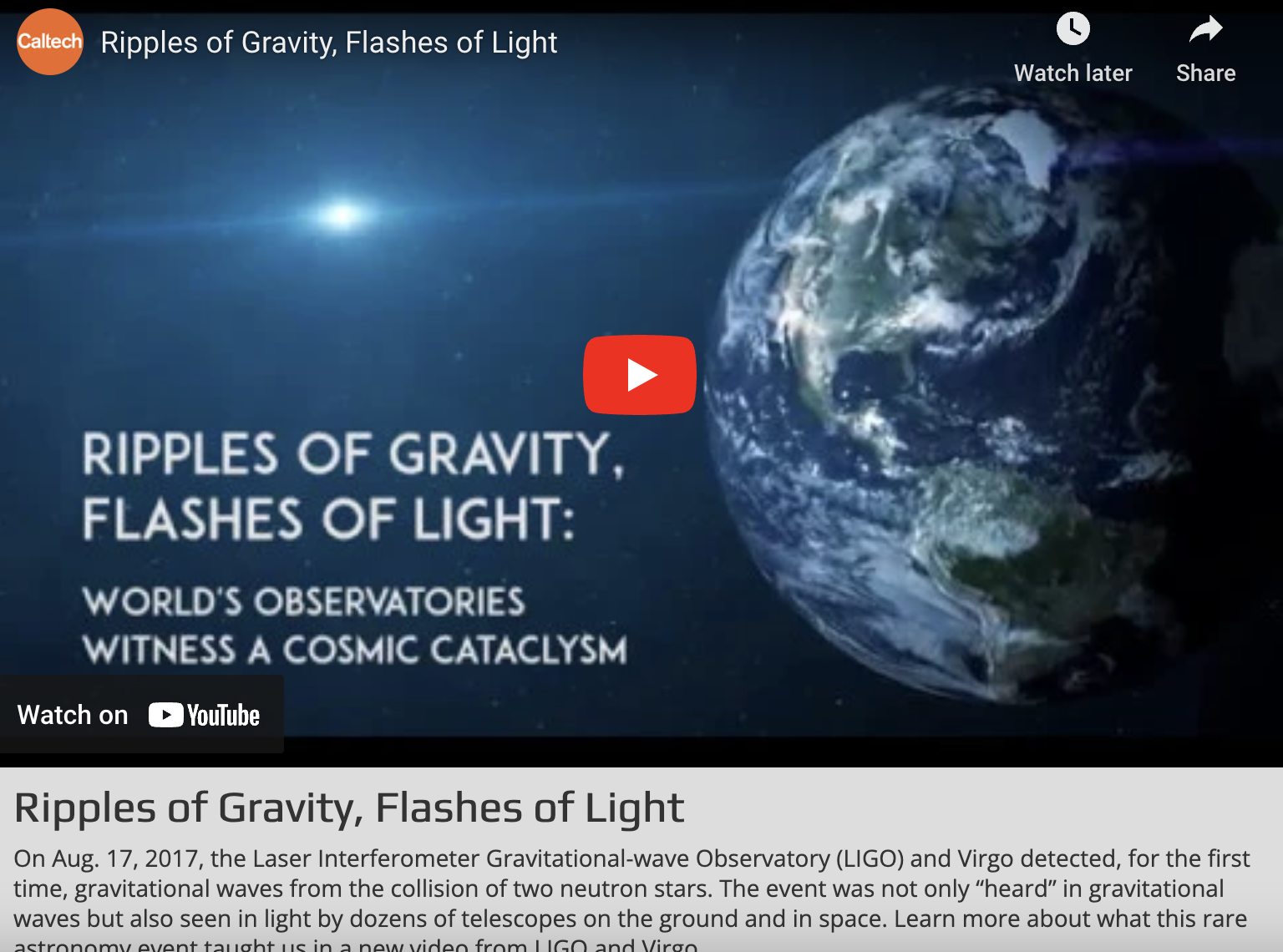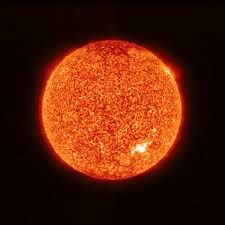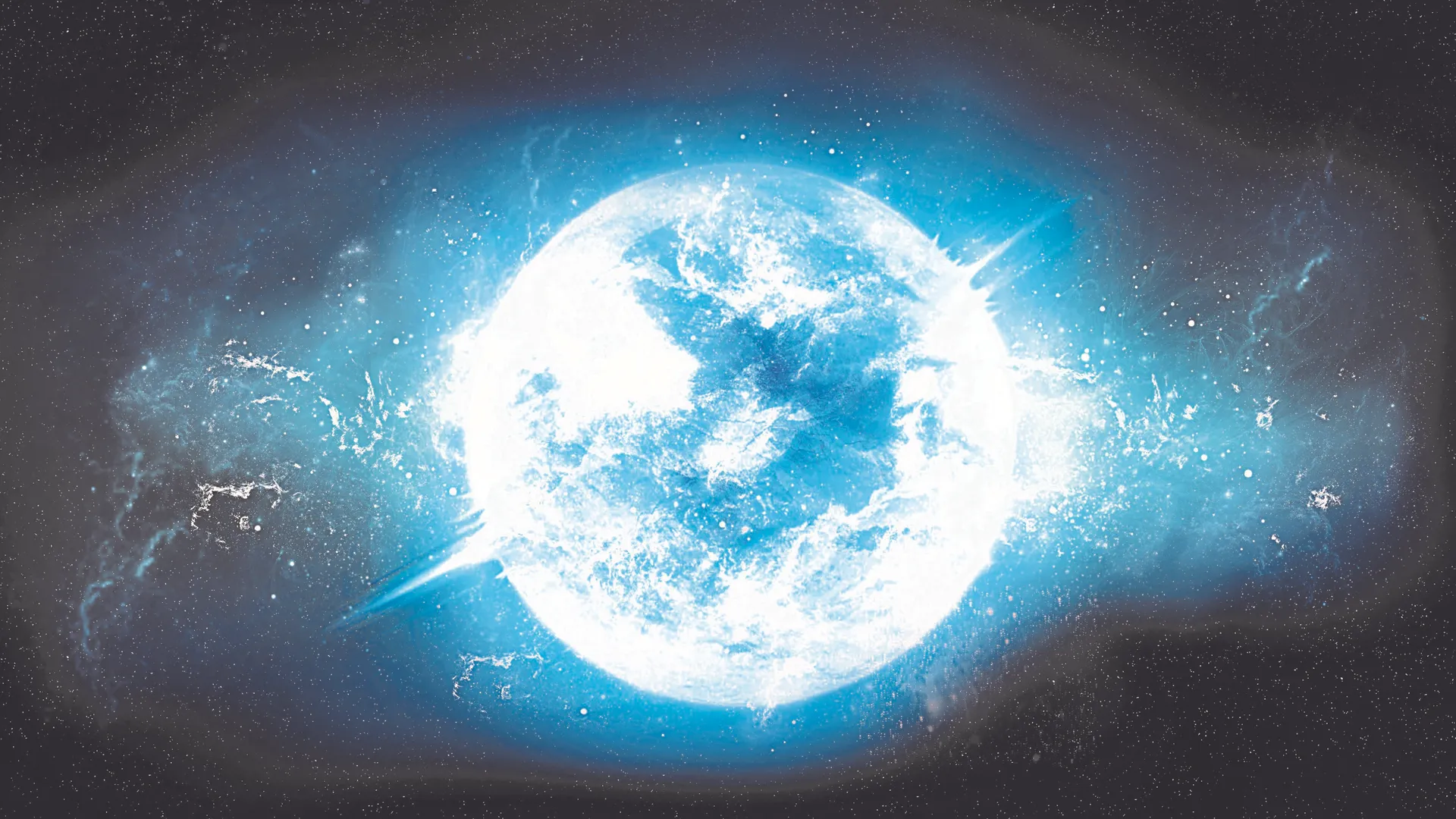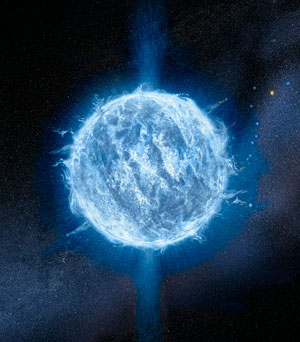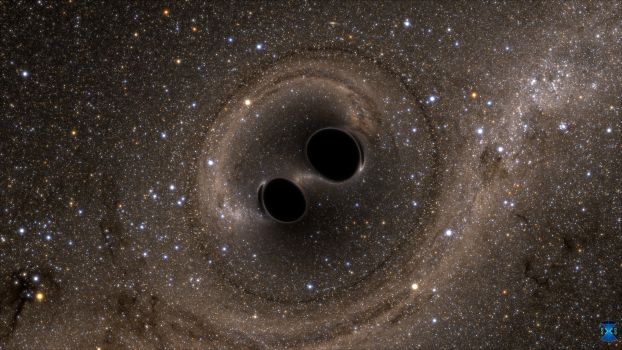Stellar Remnants: Neutron Stars and Black Holes
At right are the results of a numerical simulation of a
black hole/black hole collision and the gravitational radiation
which is produced (much as the manner in which water waves are
generated by disturbances and in the manner in which EM waves are
generated by electrical charges). |
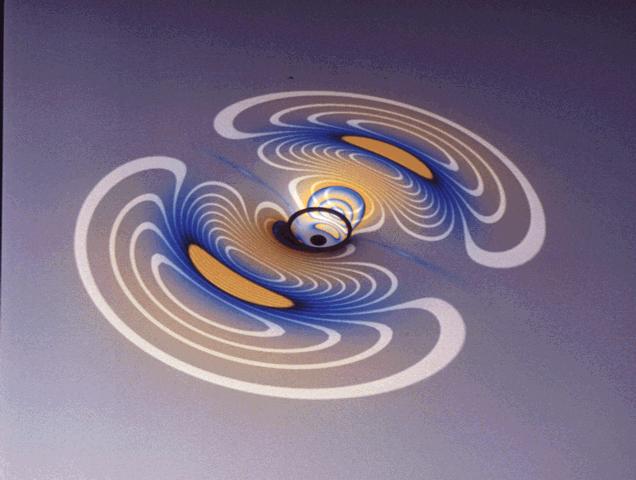
|
Reading: Chapter
18 (The Bizarre: Stellar Graveyard)
The remnants left from Type II SN are the compact objects known as
neutron stars for lower mass massive stars
and
black holes for higher mass massive stars. Both
neutron stars and
black holes are bizarre objects:
Neutron stars are roughly the mass of
the Sun (around 1.4 solar masses) with diameters of only 10 to 15 kilometers,
the size of a city, say Eugene. As their name implies, they are made primarily
of neutrons with a small amount of protons and neutrons. They have monstrous
densities, more than 1014 g per cubic centimeter, comparable to
the density and atomic nucleus. Neutron stars
are essentially giant atomic
nuclei held together by gravity.
Black Holes:
In the 1600s, Issac Newton developed his Universal Theory of
Gravitation and his three laws of motion.
This way of looking at the Universe works quite nicely for the motions of
the planets and most of our everyday experiences. However, under certain
circumstances, this picture is inadequate. To fix-up some problems,
Albert Einstein developed his Special and
General Theories of Relativity which
brought a new persepctive to our thinking about space, time, and
gravitation. Based on the theories of relativity, an unusual kind of
star was possible, Black Holes, stars for which
the escape speed from their surfaces (the Event Horizon
is the speed of light! Because the speed of light is the maximum speed
to which an object can be aceelerated, nothing can escape from a
black hole,
not even light.
In this section, we go over some of the properties and recent observations
of neutron stars and
black holes.
I. Neutron Stars
The existence of neutron stars was predicted
soon after the neutron was discovered by Chadwick in 1932, and how they
might be formed in Type II SN as predicted in a prescient paper by Baade
and Zwicky in 1934. However, it wasn't until 1967
that neutron stars
were discovered when Jocelyn
Bell and Anthony Hewish discovered what are called
pulsars. Pulsars are rapidly
rotating (some spinning more than 600 times
per second), strongly magnetic (the strongest having fields of order
100 billion Tesla) neutron stars.
A typical MRI machine on Earth has a magnetic field of several Tesla!
Produced in 1054 but only discovered in 1968,
the Crab pulsar
(rotating neutron star) found
in the Crab Nebula
(supernova remnant) is a prime example of a pulsar.
The Crab pulsar
pulses 30 times a second in the γ-rays all the way
to the radio; it is one of the few pulsars
to blink in the optical.
The pulsation of the Crab pulsar
is interpreted within the standard model
for a pulsar. Pulsars are
modeled as rapidly rotating strongly magnetic neutron stars,
the neutron star in the Crab pulsar
spins 30 times a second with
intense magnetic fields, the neutron star in the Crab
pulsar
is thought to have a field of strength
108 Tesla. Outside of these properties, the neutron star in the
Crab pulsar has typical
properties of a neutron star,
mass around 1.4 times that of the Sun and radius of 10 to 15 km.
If the Crab pulsations are indeed
caused by the spin of the star in the Crab,
then the Crab pulsar must contain a neutron star
rather say, a normal star or a white dwarf.
Its high rate of spin means that in order
for a star to hold itself together against the centrifugal force arising from
the rotation, the density of the star must be greater than
100 billion grams per cubic centimeter. This density
is larger than that of a main sequence star or a white dwarf
but is comfortably below that of a neutron star.
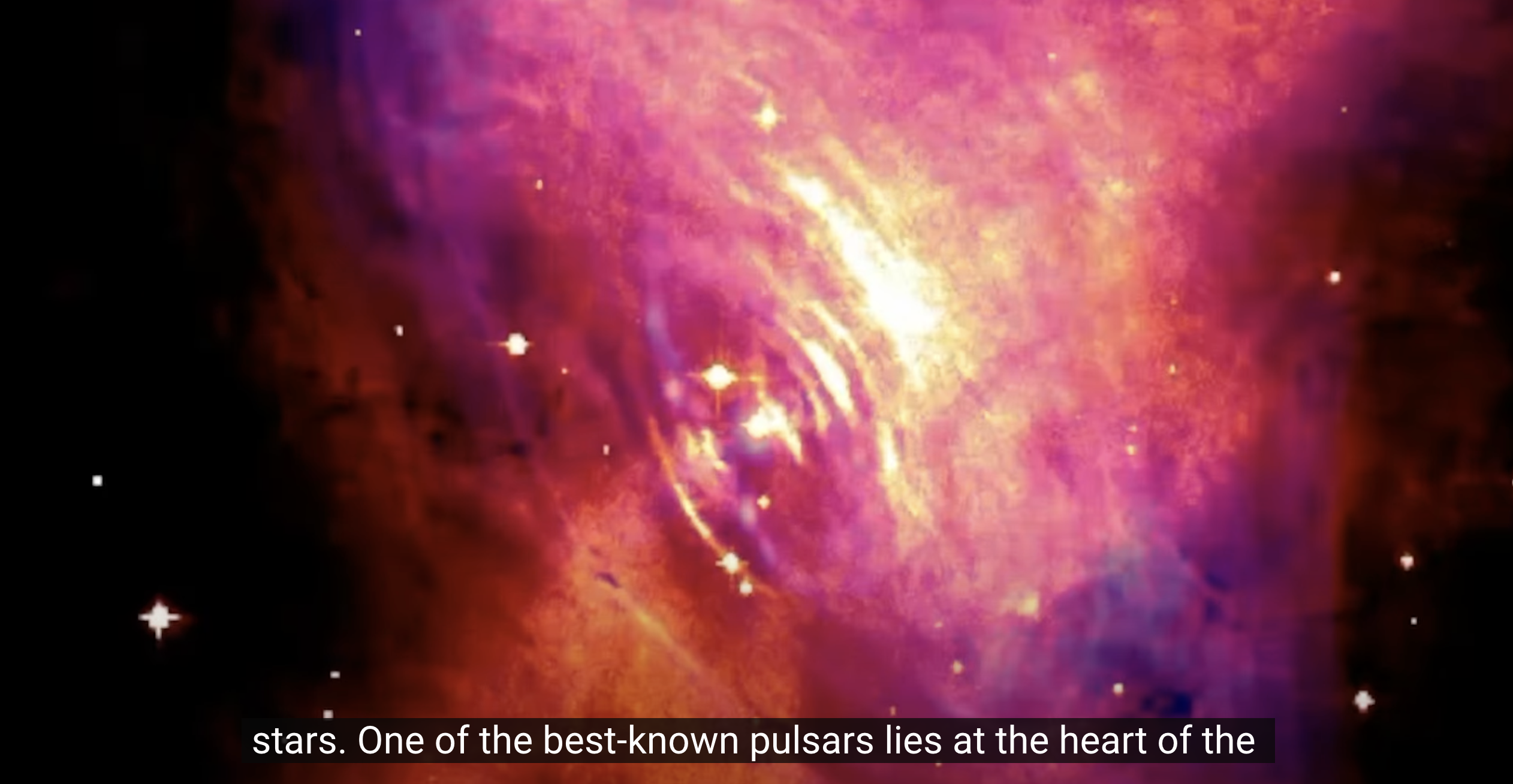
The burst of neutrinos detected from SN1987A by the Kamiokande and IMB
experiments showed that a neutron star was produced during the explosion
of SN987A. Because of this many searches were launched in attempts to find
the neutron star. Despite many attempts, the neutron star thought to lie in
the center of SN1987A remained elusive. In the last
few years, however, indirect evidence that a neutron star lurks in the
heart of SN1987A has been found using the Webb telescope.
Astronomers have noted the signal due to singly ionized
Argon (ArII) shown in the upper right image
(the bright spot in the center) must be the result
of an energetic source of emission at the center of the SN1987A.
The type of source most consistent with the
data is a neutron star. This result is tantalizing but further lines of
inquiry (and evidence) must be developed to make an air-tight argument that
the long sought-after neutron star has indeed been found.
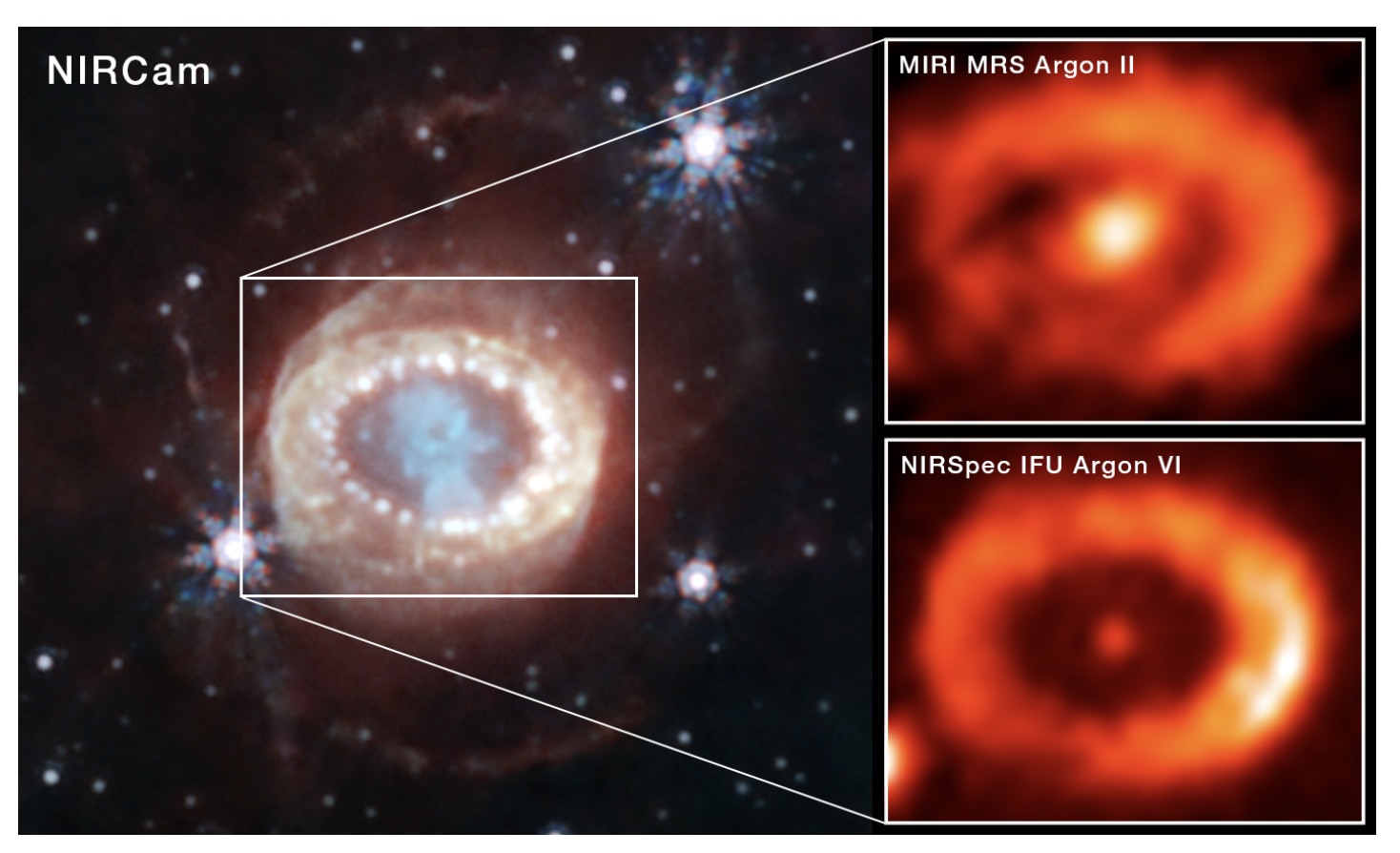
II. Black Holes
The idea of a Black Hole although formally flowing
from Einstein's theories, nonetheless has its origins in the late 1700s,
well before Einstein's time. Michell (1784)
and Laplace (1799) independently
suggested the idea for dark stars
Imagine we have four stars, each of 1 solar mass, that is, each star has the
mass of the Sun. From upper left, moving clockwise, we have images
of the Sun,
a white dwarf, a black hole, and a neutron star. Each object
has different radius.
The Sun has 7x108m, the white dwarf 6x106 m,
the neutron star 104 m, and the black hole 3x103 m
What is the escape speed from each object? Well
the escape speed is how fast must an object move to escape the gravitational
pull of the body.
- For the Sun, we find that the escape speed is
600 km per second
- What do you think the escape from the
white dwarf will be? larger or smaller than that from the Sun? Well,
the mass is the same so that doesn't affect anything. Hmm, the radius
is smaller so that we are closer to the center of the white dwarf and so we
would expect that its escape speed would be larger. Indeed it is. The escape
speed from the white dwarf is about 7,000 km per second.
-
What do you think the escape speed from the neutron star will be? larger or
smaller than the white dwarf? It will be larger and is about
200,000 km per second,
nearly the speed of light which is 300,000 km per second!
Interestingly, all of the escape speeds are less than the speed of light. This
is good, because in our Universe,
it is physically impossible to accelerate an object to the
speed of light in our Universe. Consequently,
objects will travel slower than the
speed of light and so, in principle, none of the aforementioned stars can trap
particles of light.
The last entries in the game are the black holes. It turns out, that if
the radius of a one solar mass star is less than 3
kilometers then their escape speeds are
greater than the speed of light. This means that nothing, not even
light will be able to escape from their surfaces.
Michell and Laplace essentially made this argument
in the late 1700s to suggest that there should be
dark stars, that is, stars from which light
cannot escape. Today we would call such stars
black holes.
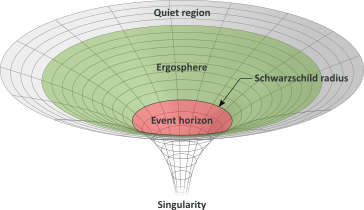 |
The surface of a black hole is referred to as the
Event Horizon, because
this is the surface from which the escape speed is the speed of light.
The radius of the Event Horizon
is the Schwarzshild radius. Anything inside
of the Event Horizon
cannot escape from the black hole and so is
cut-off from our Universe. Things outside of the Event Horizon
can reach the rest of the Universe (communicate with the Universe). The
Event Horizon
is not a material surface, the matter inside of a black hole
has all streamed into the very center where it is crammed into a point with
zero volume and so has infinite density. This bizarre point is known as the
singularity.
|
To get a feel for some of Einstein's ideas, we must start thinking about the
space-time of the Universe. Suppose that I tell you that
Astronomy 122
meets in 100 Willamette Hall. Is this enough to get you to class?
Well, no, because I didn't tell you when the class meets,
namely, 14:00-14:50 on MWF.
In order for you to show up for class, you must know not only
where
it meets but also when it meets.
This is true for all events in the Universe;
you must know not only where the event occurs (its spatial position) but
also when the event occurs (its temporal position).
The space
and time
positions are equally important and we should
think about events in the Universe in terms of their
space-time positions.
An interesting property of this space-time is that it has
structure and is not rigid.
Question: What are some consequences of
viewing the Universe in this manner?
The path an object rolling on a table top
follows is determined by the shape of the surface (it rolls on the
table top). The table top defines the space-time for the rolling
object. For objects rolling in the
Universe, a similar idea holds in that the paths of objects
follow the shape of the shape-time.
Locally, the space-time in this room
is fairly flat and so, unless you push on an object, its free motion
(unforced motion) is in a straight line.
If I were to place a large chunk of mass into the room, the mass
would distort the shape of the space-time. In two-dimensions, this is easy
to visualize. Imagine a rubber sheet onto which
you place a bb. The bb causes a depression to form in the rubber sheet.
|
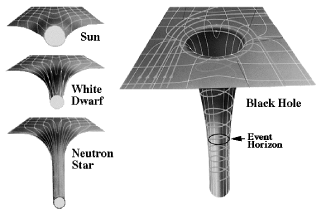
|
This is analogous to what
mass does to the structure of space-time. It causes a depression to
form so that if an object rolls toward it, it falls into the
pit and is captured. (This, by the way, is how Einstein envisioned
how gravity works.
Mass distorts the space-time causing particles to roll toward
the mass. Note that the objects follow the shape of the
space-time and in
this sense are following an unforced motion! That is, there is no
gravitational force, objects are simply following their natural motions.)
Return to the rubber sheet analogy. If I drop
a bb on the sheet and it bounces, ripples in the sheet are produced
which propagate
away from the disturbance. These ripples in the space-time are referred
to as gravitational waves.
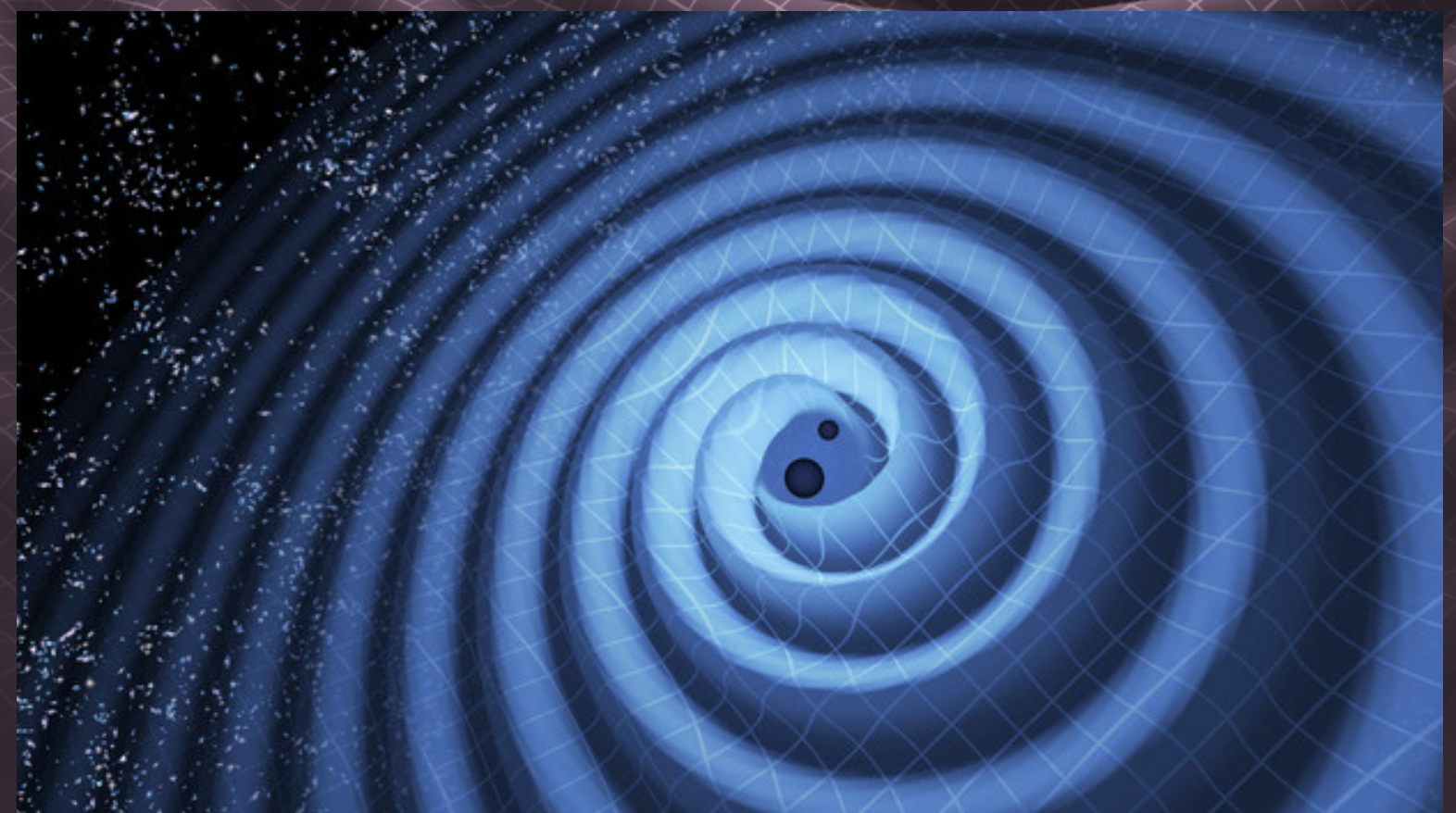
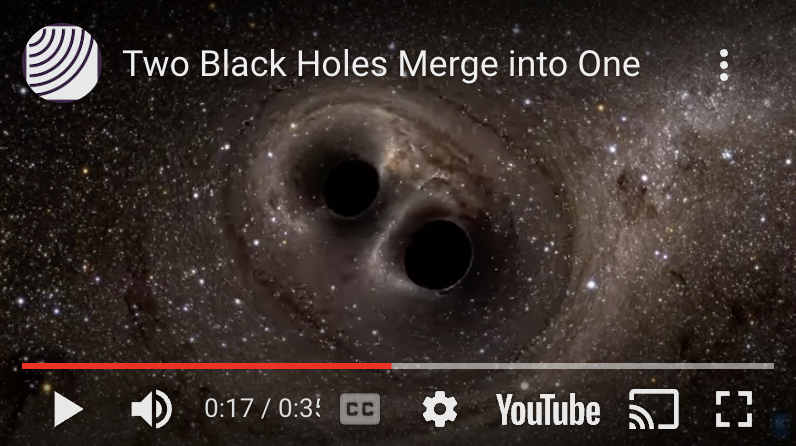
Gravitational waves from compact stars and other Celestial Objects.
Below is shown the
Laser Interferometer Gravitational-Wave
Observatory (LIGO) located in Hanford, WA which announced the discovery
of gravitational waves in 2015 from GW150914, produced by the merger
of two orbiting
black holes (Abbott et al. 2016). This important work earned the 2017 Nobel
Prize in Physics for
Rainer Weiss, Barry C. Barish and Kip S. Thorne for "decisive
contributions to the LIGO detector and the observation of gravitational waves."
Note that there was an earlier indirect detection of gravitational waves
for which the Nobel Prize in Physics 1993 was aswarded to
Russell A. Hulse and Joseph H. Taylor Jr. for "the discovery of a new type
of pulsar, a discovery that has opened up new possibilities for the study
of gravitation."
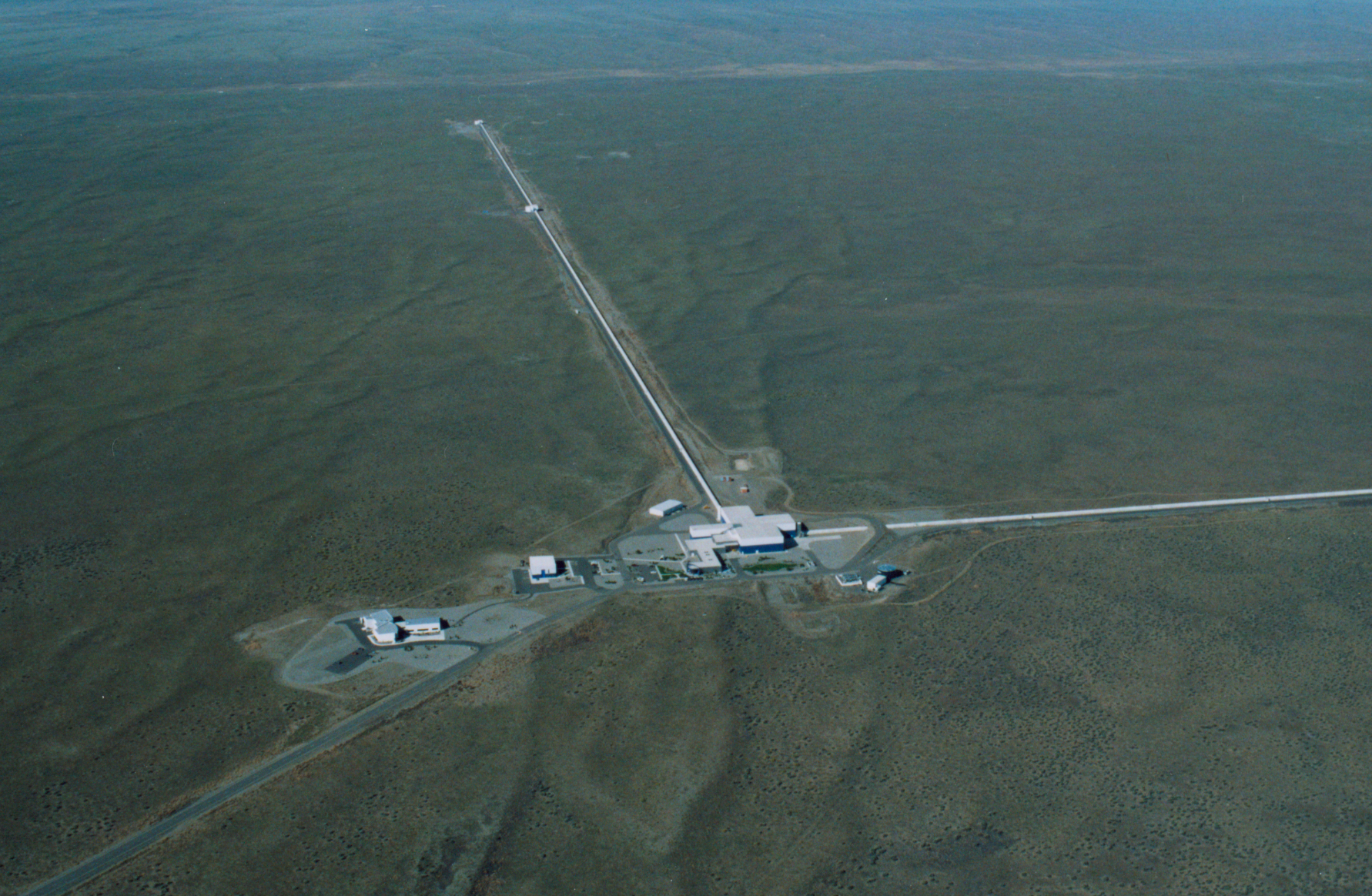
Comment: The opening of the sky to the study of gravitational
waves was huge, but opening ot the sky to the combination of gravitational and
the Electro-magnetic (EM) spectrum and the study of other forms of
emissions from Celestial objects would be huge.
Examples for such GW/EM sourfes are supernovae,
$gamma;-ray bursters (merging neutron stars
or black holes),
unstable rotating neutron stars, close binary white dwarf stars... .
The exciting discovery of gravitational
waves from merging neutron stars in the form of a γ-ray burst
has verified that indeed, gravitational waves with electromagnetic radiation
are produced by a broad range of astrophysical sources.
The recent detetion by LIGO of
a γ-ray burst source has
substantially enhanced our understanding of
the heavy element production in the Universe:
